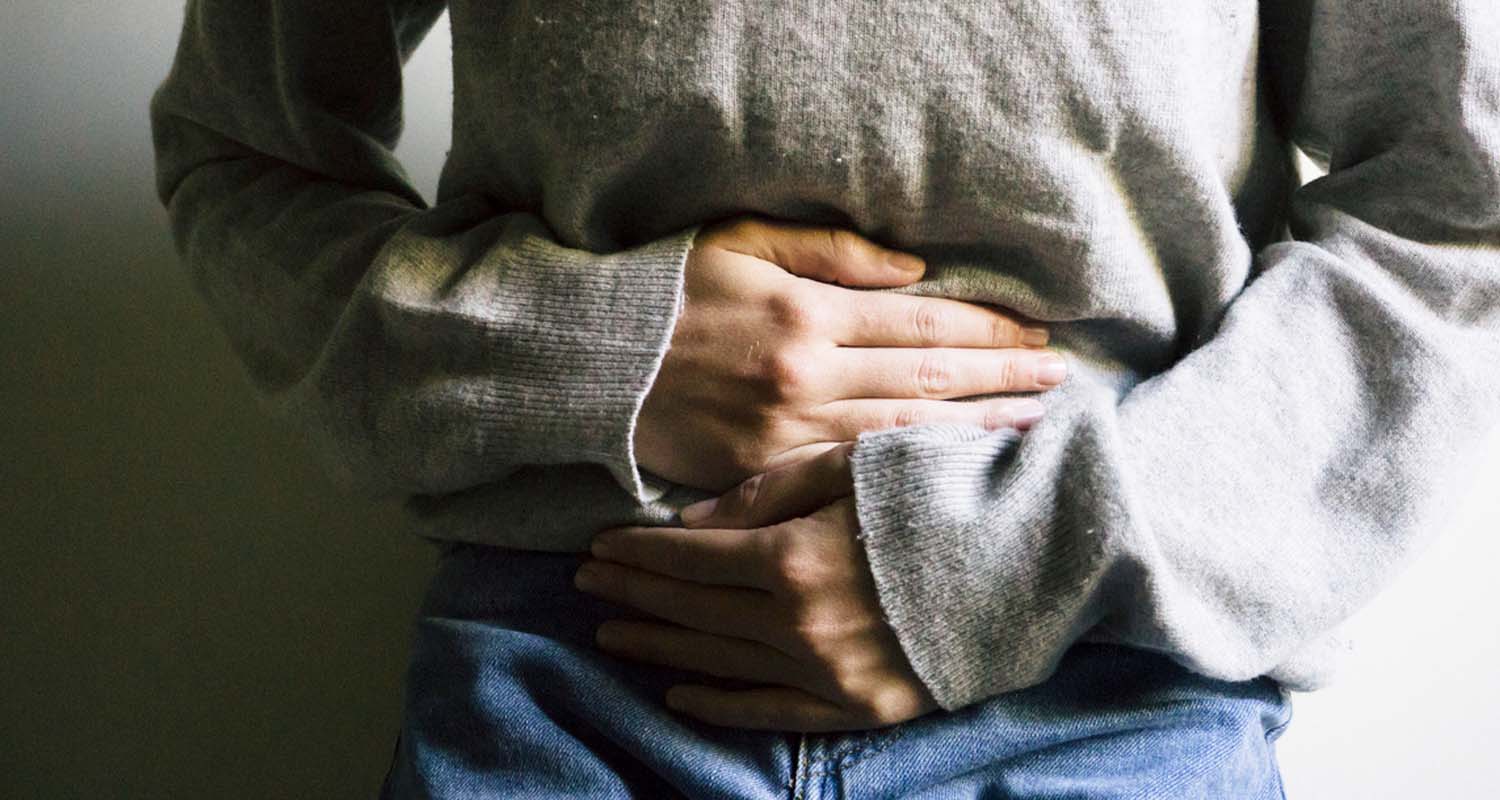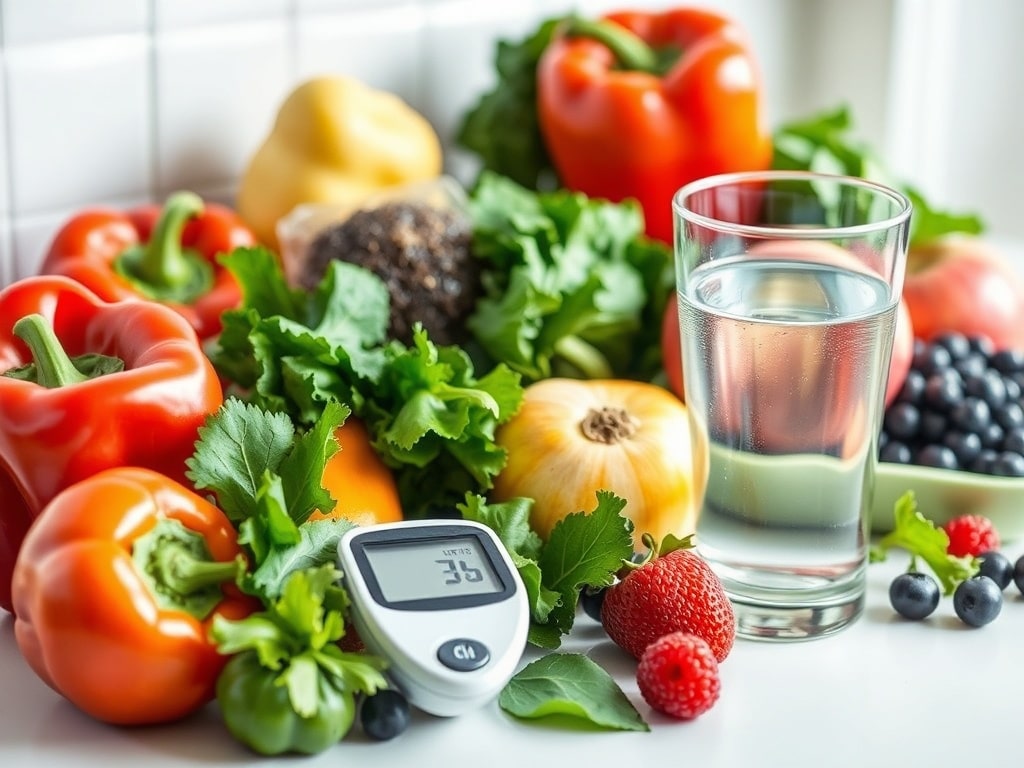
- There’s a pretty good chance you’ve had an uncomfortable period at least once in your life. PMS and PMDD are caused by a number of factors, but there’s a strong link between nutritional deficiencies, and estrogen dominance.
- PMS includes physical and mood symptoms. PMDD includes any of the symptoms you might experience with PMS, but mood symptoms are much more severe and affect your relationships and life.
- Nutrition, supplements, and even paying attention to your poop can reduce the severity of your symptoms.
There’s a pretty solid chance you’ve had some type of premenstrual symptom at some point in your life. PMS, or premenstrual syndrome, is having one or more symptoms that immediately precede or happen concurrently with your period. A lot of women have similar PMS symptoms, like:
- Breakouts
- Mood swings
- Cramps
- Breast tenderness
- Anxiety
- Bloating
- Fatigue
- Food Cravings
- Constipation
Even though there are symptoms that a lot of women have in common, PMS is an individual thing. If you have a symptom around period time, month after month, it’s probably PMS.
PMS vs. PMDD Symptoms
When emotional changes that come around period time start to disrupt your life, you may be dealing with Premenstrual Dysphoric Disorder. Premenstrual dysphoric disorder, or PMDD, comes with the physical symptoms of PMS, but with a more severe emotional component. Symptoms include any of the above PMS symptoms, along with:
- Irritability
- Anxiety
- Fatigue
- Feeling of loss of control
- Difficulty concentrating
- Depression
Researchers are still determining the exact mechanism behind PMDD, but so far it is generally accepted that hormone changes cause a drop in serotonin, which cause moods to shift.[ref url=”https://www.hopkinsmedicine.org/healthlibrary/conditions/gynecological_health/premenstrual_dysphoric_disorder_pmdd_85,P00580″]
If your mood swings get severe enough that they’re affecting your relationships and functioning in your daily life, get to a doctor ASAP.
Your period is a good indicator of how your body is working overall. If you have some discomforts going on around period time, read on to find out what you can try before heading to the doctor treatment.
How estrogen dominance causes PMDD and PMS
Women need just the right amount of estrogen to keep everything going. Too little, and symptoms look a lot like menopause. Too much can cause a range of symptoms that aren’t limited to period time. If you’re experiencing any of these all month long, you may want to get your hormones tested:
- Severe fatigue
- Breast changes (larger, smaller, soreness, cysts)
- Mood swings
- Bloating
- Adult acne
- Swelling
- Uterine conditions (fibroids, endometriosis)
- Heavy periods
- No periods
- Irregular periods
- PMS
- PMDD
This isn’t a complete list. If you suspect estrogen dominance, talk to your doctor. In this case, a functional medicine doctor will have a much more thorough approach to estrogen issues, because medical doctors all too often reach for birth control pills to correct problems, which actually stack on more estrogen.
Estrogen dominance can arise if you have slow or congested elimination systems, if you produce too little progesterone, if you’ve used or are using hormonal birth control, from exposure to xenoestrogens (compounds that mimic estrogen) found in fragrances, solvents, plastics, parabens, pesticides, etc., and simply by approaching menopause.
One big indicator that you have estrogen dominance is PMS, PMDD or otherwise miserable periods. Estrogen balance plays an enormous role in regulating your period, so if estrogen goes wonky, so does Aunt Flo.
Natural ways to treat PMS and PMDD
1. Check your regularity
One of the ways your body eliminates excess estrogen is through the bowels. If your digestive system is sluggish, the estrogen that the liver excretes into the bile has extra opportunity to be reabsorbed into the bloodstream through the intestinal tract.
You should have two to three solid (not hard) bowel movements every day. If you’re not, you can help things along by:
- Piling on the veggies for extra fiber
- Drinking more water to accommodate the extra fiber
- Taking a shot of apple cider vinegar before meals
- Having a functional medicine doctor evaluate your stomach acid production
- Checking your microbiome with an at-home analysis like Viome
- Considering adding magnesium to your stack
- Adding resistant starch for microbiome support
If your elimination is slow, you have estrogen compounding on itself every time your body releases some. You could have excess estrogen for other reasons, but good digestion is key to eliminating estrogen and keeping your hormone levels stable.
2. Add omega-3 fats to your diet
Research shows that adding omega-3 fatty acids to your diet reduces common PMS symptoms. Symptoms that responded to omega-3s include:
- Depression[ref url=”http://www.sciencedirect.com/science/article/pii/S0965229912001744″]
- Nervousness[ref url=”http://www.sciencedirect.com/science/article/pii/S0965229912001744″]
- Anxiety[ref url=”http://www.sciencedirect.com/science/article/pii/S0965229912001744″]
- Lack of focus[ref url=”http://www.sciencedirect.com/science/article/pii/S0965229912001744″]
- Bloating[ref url=”http://www.sciencedirect.com/science/article/pii/S0965229912001744″]
- Headache[ref url=”http://www.sciencedirect.com/science/article/pii/S0965229912001744″]
- Tender Breasts[ref url=”http://www.sciencedirect.com/science/article/pii/S0965229912001744″]
- Breakouts[ref url=”https://jamanetwork.com/journals/jamadermatology/article-abstract/479384?redirect=true”]
Research shows that the longer people supplemented, the more their symptoms decreased.[ref url=”http://www.sciencedirect.com/science/article/pii/S0965229912001744″] In other words, if you want to see benefits, make it a consistent part of your long-term PMS treatment plan.
The best thing to do is to eat plenty of wild salmon and get a high-quality omega-3 supplement. Krill oil packs an extra punch — it was more effective than omega-3 fish oil at treating PMS symptoms, likely because of its fatty acid profile and antioxidant content.[ref url=”https://www.ncbi.nlm.nih.gov/pubmed/12777162″]
3. Take magnesium for mood and physical symptoms of PMS and PMDD
Because of large-scale farming and soil depletion, our vegetables don’t take up as much magnesium as they did hundreds of years ago. Most Americans are magnesium-deficient,[ref url=”https://www.ncbi.nlm.nih.gov/pubmed/12949381?dopt=Abstract “] which is bad news because magnesium plays a huge role in the way our cells function, head to toe.
Vitamins and minerals can make a big difference. A good supply of magnesium supports our hormones, which affects menstruation and PMS. Researchers found that women who experienced PMS had a lower magnesium concentration in their red blood cells than women who did not experience PMS.[ref url=”http://journals.sagepub.com/doi/abs/10.1177/000456328602300607 “] This also applied to study participants who experience menstrual migraines — they had a lower blood concentration of magnesium than the general population, and supplementing reduced the frequency and severity of menstrual migraines.[ref url=”http://onlinelibrary.wiley.com/doi/10.1111/j.1526-4610.1991.hed3105298.x/full”]
Magnesium supplements have been tied to reduced PMS symptoms in general, and supplementing relieved mood swings.[ref url=”https://journals.lww.com/greenjournal/Citation/1991/08000/Oral_Magnesium_Successfully_Relieves_Premenstrual.3.aspx”]
Related: How to Choose the Best Magnesium Supplement for Your Body
4. Add B vitamins for PMS and PMDD treatment
Research shows that certain B vitamins reduce the symptoms of PMS. Researchers demonstrated that vitamin B6, up to 100 mg per day, help reduce PMS and PMDD symptoms.[ref url=”http://www.bmj.com/content/318/7195/1375.short”]
Preventively supplementing thiamine (B1) and riboflavin (B2) both reduced the risk of PMS.[ref url=”http://ajcn.nutrition.org/content/early/2011/02/23/ajcn.110.009530.short”]
5. Supplement with calcium D-glucarate to reduce estrogen
A main reason women experience premenstrual symptoms is because of excess estrogen. Because of daily exposure to estrogen-mimicking substances (plastics, chemicals, fragrances, etc.), you’re much more prone to estrogen dominance than your great grandparents were.
Estrogen dominance causes long list of problems including infertility, mood imbalances, PMS, and other health problems in women. Men experience things like mood swings, weight gain and gynecomastia (man boobs) when their estrogen gets out of control.
If you’re diagnosed with high estrogen levels or if you’re high-risk for estrogen-dependent cancers, your doctor may prescribe Tamoxifen. It reduces estrogen, but not without side effects including stroke, blood clots, uterine cancer, and cataracts.
Research shows that a supplement called calcium D-glucarate (CDG) could be just as effective as Tamoxifen in treating estrogen dominance.[ref url=”http://journals.sagepub.com/doi/abs/10.1177/1534735403002002005 “] CDG helps detox the liver by splitting off into glucaric acid, the active form. Glucaric acid binds to toxic substances and ushers them into the urinary tract and out. It helps excess estrogen get ushered out of the body.
In one study, calcium-d-glucarate reduced the number of estrogen receptors by 48 percent. It’s also been shown to lower serum estrogen levels by 23 percent in rats.[ref url=”http://go.galegroup.com/ps/anonymous?id=GALE%7CA74510831&sid=googleScholar&v=2.1&it=r&linkaccess=fulltext&issn=10895159&p=AONE&sw=w&authCount=1&isAnonymousEntry=true”]
The most important time to take it would be at ovulation and a few days after, when your estrogen levels are highest.
6. Meditate to treat PMS and PMDD mood changes
People have been meditating since the beginning of time, and it’s clear why. Meditation measurably changes the structure of your brain, and the changes come with perks, like:
- Overall health benefits
- Feeling happier
- Being nicer to others
- Increased self-awareness which increases control
- Increasing folds in the outer layer of the brain, which is a marker of intelligence
- Reduced stress hormones
You can tie all of these benefits to improved moods one way or another. Mood changes are a large and disruptive part of PMS, so it’s worth paying attention to meditation because you can likely affect your monthly mood changes for the better.
There’s evidence that a mindfulness practice reduces PMS symptoms.[ref url=”https://link.springer.com/article/10.1007/s12671-011-0041-x “] Evidence from 20 randomized control trials concluded that meditation was effective in reducing the severity of non-psychotic mood disorders such as PMS.[ref url=”http://online.liebertpub.com/doi/abs/10.1089/acm.2006.12.817 “] Meditate all month long, not just when your period hits, to reap the benefits.
7. Exercise regularly to help treat PMS too
Getting out and getting moving will increase your circulation, elevate your mood, and help you sweat out some of that bloat. If you’re too uncomfortable for high-intensity cardio, just a brisk walk, or even a stroll, around the neighborhood will make a big difference.
8. Avoid these things if you’re prone to PMS and PMDD
Damaged fats, sugar, and trigger foods
Damaged fats, sugar, and foods you don’t tolerate cause inflammation in the body, which can worsen PMS symptoms that are dependent on inflammation like:
- Mood changes
- Headaches
- Anxiety
- Joint and muscle pain
Conventional table salt
Conventional table salt contains aluminum-based anti-caking agents that can make water retention worse. A high-quality sea salt or Himalayan pink salt doesn’t have the aluminum compounds that tamper with your body’s natural water balance.
Stress
Sometimes, life comes at you and there’s nothing you can do about it. Other times, you know situations have a high stress potential, and you can avoid them.
Better still, have a few stress management tools at the ready so that you can work through things as they come. Here’s a box breathing video that will help you keep your cool when it all hits the fan. Exercise and meditation will help, but they’re not the only stress-reduction techniques you can try. Laughing and connecting with friends and family also helps a lot.
If you suspect your PMS symptoms are more severe for you than others’, your midwife, gynecologist or functional medicine doctor can help. Choose a naturally-minded care provider for this. The medical model dictates that the birth control pill is the one-size-fits-all answer to any hormonal issues, and there might be more to it than that.














